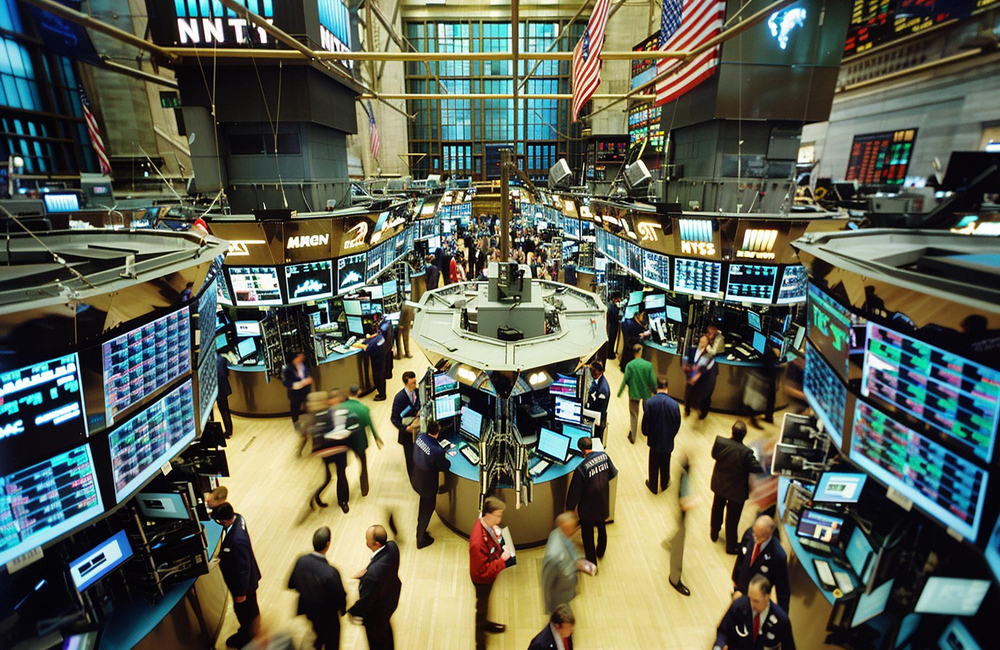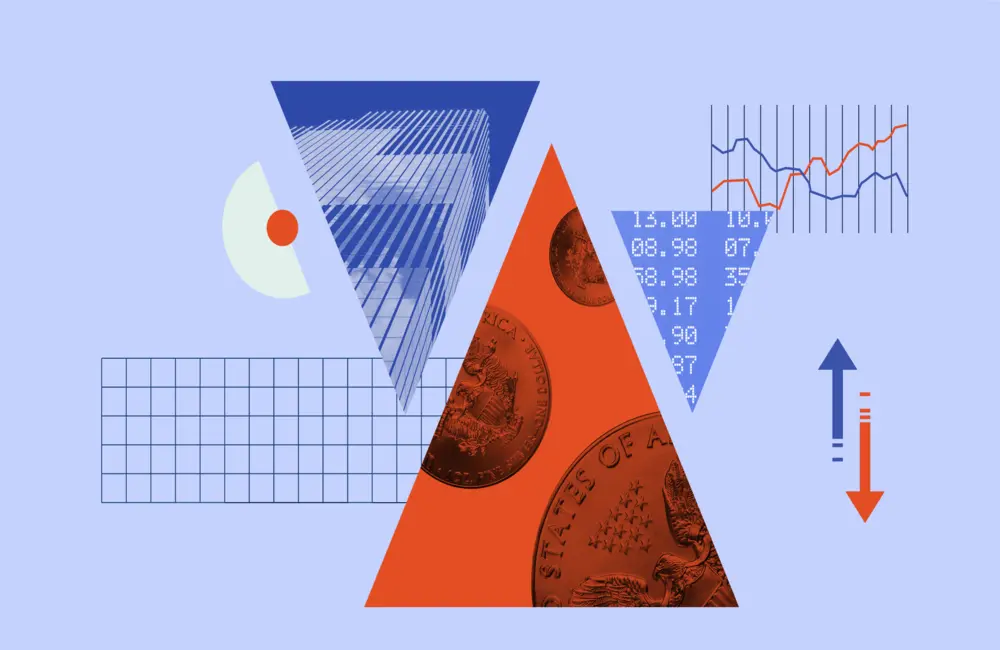ASX futures were up 2 points at 7205 close to 8.00 am AEST, indicating a positive start to trade.
US stocks finished mixed as investors dissected the minutes from the Fed’s most recent meeting.
The S&P 500 gained 0.1 percent and the Dow Jones Industrial Average dropped 0.2 percent. The Nasdaq Composite fell 0.1 percent, after being down more than 1 percent earlier in the session.
Fed officials at the meeting last month discussed accelerating their timetable for raising interest rates, starting with a widely expected increase in March, reflecting greater unease with high inflation.
The S&P/ASX 200 rose 1.1% to 7284.9 on Wednesday, as local health stocks rallied. The benchmark surrendered almost all its early gains within the first hour after opening higher on a Wall Street lead, but went on to grind higher to end the session at its high.
CSL, the third-largest company on the ASX by market capitalization, soared 8.5% after a strong 1H result and guidance. The health space also climbed 6.2%, with imaging group Pro Medicus also up 3.6% after its 1H results.
Consumer and tech stocks advanced but the materials sector lost 0.4%, even as Liontown added 18% thanks to its lithium supply deal with Tesla.
Markets
Global Market Report - 17 February
Australian shares are poised for a flat open after Wall Street managed a late rally to ease losses.
Australia
Australian shares are expected to open flat after minutes from the latest U.S. Federal Reserve meeting broadly matched market pricing for monetary policy tightening, allowing a rally late on Wall Street to nip losses.
ASX futures had risen 2 points to 7205 near 8.00 am AEST, indicating a positive start to trading.
US stocks closed mixed as investors dissected the minutes of the Federal Reserve’s most recent meeting.
The S&P 500 was up 0.1 percent and the Dow Jones Industrial Average was 0.2 percent lower. The Nasdaq Composite fell 0.1 percent, having been down more than 1 percent earlier in the session.
Fed officials at their meeting last month described pushing up their timetable for lifting interest rates, starting with a widely expected hike in March, in response to increased unease with high inflation.
The S&P/ASX 200 closed 1.1% higher at 7284.9 in the local market on Wednesday, bolstered by health stocks. The benchmark erased almost all its early gains within an hour of opening up, after a strong lead from US stocks, only to grind higher to finish at its session high.
Blood products maker CSL, the third-largest company on the ASX by market cap, rose 8.5% following a strong 1H result and solid outlook. In the health sector, the one gained 6.2% as imaging company Pro Medicus rose 3.6% following the 1H results.
Consumer and tech stocks were higher, but the materials sector lost 0.4% despite Liontown surging 18% on its contract to supply lithium to Tesla.
Shares in Fortescue Metals slipped 2.04% after the miner slashed its dividend despite a 32% tumble in first-half net profit.
Elsewhere in overseas trading, the pan-continental Stoxx Europe 600 inched up less than 0.1 percent. Asian major indexes closed up. Japan’s Nikkei 225 soared 2.2 percent and South Korea’s Kospi rose 2 percent. Hong Kong’s Hang Seng gained 1.5 percent, and mainland China’s Shanghai Composite climbed 0.6 percent.
In commodities, gold futures gained 0.9% to $US 1873.30 an ounce; Brent crude fell 1.2% to $US92.14 a barrel; Iron ore rose 2.9% to US$140.
AU bond market, the yield on the 10-year bond up to 2.23%. The US 10-year Treasury yield flat at 2.04%. Yields fall when prices rise.
Near 8:00 a.m., the Australian dollar was fetching 72.00 US cents, higher from the last close of 71.51. The WSJ Dollar Index, which tracks the U.S. dollar against 16 others, dropped to 89.60.
Asia
Asian markets were on the up, with Chinese shares also closing higher, as broader Asian equities rose after concerns about tensions between Russia and Ukraine eased. The Shanghai Composite Index closed up 0.6%, the Shenzhen Composite Index was up 0.6% and the ChiNext Price Index gained 0.1%. Auto stocks were the biggest gainers, with Great Wall Motor rising 1.6%, and BYD Co. and SAIC Motor adding 1.0% each. Energy companies were mixed after the chief of the International Energy Agency urged OPEC+ to increase production. China Petroleum & Chemical Corp. was unchanged and China Oilfield Services declined 1.4%.
In Hong Kong, the Hang Seng Index rose 1.5%, following blue-chip gains in the US overnight, after Russia said it has withdrawn some troops from Ukraine's border, KGI Securities says. Casino stocks led gains. Sands China ended 6.8% higher and Galaxy Entertainment Group gained 5.3% after analysts said gross gaming revenues in February had stayed strong, post-Lunar New Year holidays. “According to the Macau Government Tourism Office, visitation has continued the upward trend post Lunar New Year,” Daiwa Capital said in a note. Other gainers include BOC Hong Kong which ended 5.3% up.
Japanese stocks closed higher overall, with publishers and high-tech electronics issues leading the top gainers in particular as concerns over Russia-Ukraine geopolitical tensions fade. Bridgestone soared 7.4% after forecasting higher revenue and operating profit for 2022 and said it would buy back shares. The Nikkei Stock Average gained 2.2%. Watch for any updates on the situation in Ukraine. Investors are also tracking Japan’s Covid-19 infection trend and the government’s counter measures.
Europe
European shares closed little changed as geopolitical turmoil triggers market volatility and oil prices to rise. The pan-European Stoxx 600 added 0.05%.
The “relief rally triggered by reports that some Russian troops were returning to their bases yesterday has turned into a bit more caution,” says CMC Markets analyst Michael Hewson. “On the one hand the Russians are saying one thing, but we are getting reports from NATO and US that Russian installations and troop numbers are increasing around the borders in and around the Ukraine area.”
“Having had a sharp fall in the oil price yesterday we’ve seen a rebound today and that does seem to be helping the energy sector which was a drag on the FTSE 100 yesterday,” CMC Markets UK added.
BP ended up 1.6% and Shell gained 2.0%.
North America
US stocks closed mixed as investors digested the minutes from the latest Federal Reserve meeting.
Fed officials at their meeting in December debated moving more forcefully to raise interest rates starting with an expected hike in March, as they grow more concerned about high inflation.
While the minutes themselves didn’t seem to vary from the Fed’s public statements, most analysts said the market appeared relieved that they didn’t take on an even more hawkish tone. Investors’ debate appears to be whether the Fed raises by 50 basis points in March or just 25.
“Those officials don’t seem to be seriously considering either a 50 bp rate hike to kick off the tightening cycle or a hike at each of the remaining seven policy meetings” this year, said Paul Ashworth, the chief US economist at Capital Economics.
The Fed minutes also took some of the market’s focus off events in Ukraine. Russia’s Defence Ministry said Wednesday it was pulling troops from Crimea after military exercises there had concluded, as Western intelligence saying Moscow could invade its neighbors did not immediately manifest. The secretary-general of the North Atlantic Treaty Organization said Russia was continuing to build up military forces around Ukraine.
“Every new statement, every little piece of news, could still push markets in either direction,” said Carsten Brzeski, global head of macro research at ING Groep.
New inflation data was also flashing worrying signals. Prices in the U.K. were increasing at their fastest rate in almost 30 years in January. In the US, retail sales surged 3.8% month-on-month in January, beating economists’ predictions. The numbers are seasonally adjusted, but not adjusted for inflation, and several analysts noted that the gains are largely a function of rising prices.
What the reports indicate is that inflation could be about more than just monetary policy, said Susannah Streeter, an analyst at Hargreaves Lansdown. Energy prices are climbing and are a primary driver of increasing prices, and supply-chain disruptions are still a problem, which is also pushing prices higher, she said. “I do wonder whether inflation is going to be as transitory as was thought,” she said.
This week’s swings in the market are a symptom of a process that has simmered for months, as investors adjust to rising inflation and a shifting monetary policy and one that is likely just getting started, said Joseph Amato, the chief investment officer for equities at Neuberger Berman.






















